Yet another insulation question.
My 1920 Chicago bungalow has had the 2nd floor attic converted to a master bedroom suite. The long sides of the bedroom end in knee walls about 4 feet high with small, accessable attics behind the knee walls.
The knee walls are insulated with a single thickness of R13 fiberglass. I want to add more insulation. Options include:
1.Pink foam sheets, 1 or 2 inches thick.
2. Isocy… (sumthin, I fergit) foam panels with silver facings on either side.
3. Cut addititional 2×4’s, attach to the existing kneewall studs and more fiberglass.
I lean towards #2, as I believe the foil facing will act as a radiant heat barrier. The attics behind the knee walls get real hot in summer. Can I simply nail this to the knee wall studs? Do I have to cover the foam panels with another material like plywood for fire protection? The mfg’s website is useless for these questions.
Any thoughts?
Thanx much.
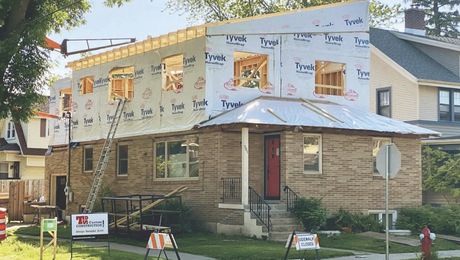

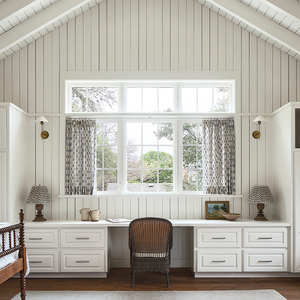
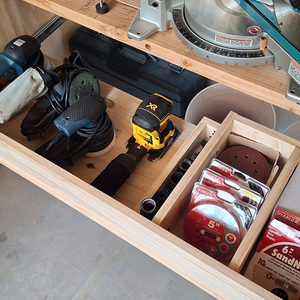
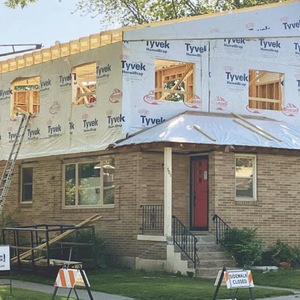
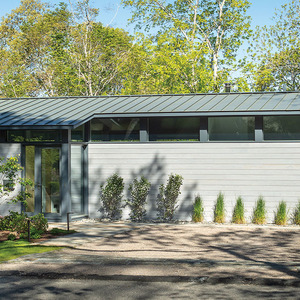













Replies
If no one has said so yet, welcome Norman.
Your #2 choice is a good one, it will gain you the most. The Alum facing actual gain you quite a bit, esp on the really cold days (radiant heat loss proportional to the 4th power of the absolute temperatures)
Assuming the sheets will be on the outside of existing studs, push in the existing R13 slightly so the Alum. facing is NOT in contact with the old R13. Also, tape the joints with Aluminum duct tape. edit to bold size in response to later post on making sure you realize the importance of sealing to prevent air infiltration
US dept HUD inthe late 40s and early 50 actually built and tested a number of insulation schemes, turns out that an Alum face R-11 batt with a 1" air space is better overall than kraft face R-13 overall, showing the effectiveness of the foil facing.
Edited 8/28/2005 10:41 am ET by junkhound
I think it is probably a bad idea to use polyisocyanurate sheets in conjuntion with FG batts if the FG has a kraft face. If you are suggesting a wall that is :
roof sheating - attic - polyiso - FG - FG kraft face - drywall then I believe (and I'm no expert here) in the winter vapor will diffuse through the drywall and slowly through the kraft face and get stopped at the polyiso foil face. Drying is to the exterior in winter but that is prevented by the polyiso. Although this is a relatively small amount of moisture I think it could be a problem over time. I think if you remove the FG kraft face (or the entire batt) it works though. Someone else want to weigh in here?I think the polyiso is the way to go, it just requires some thinking about the details.
How bout if I vertically slice the Kraft paper several times per batt? Most of it is > 30 years old and crumbly anyway.
The effectivness of a vapor barrier is proportional to its surface area and permeability. So if you cut narrow slits in the kraft face you are degrading the surface area that the vapor barrier covers. But you are only dropping it by a few percent(at most) as the area of the slit is small compared to the total vapor barrier area. It might be enough, but I'm no expert and not in a position to judge.You might pick up the "Moisture Control Handbook" by Lstiburek from the library. It probably doesn't deal with your exact wall situation but will give you some idea of how moisture moves within a building.
Hey Norman...
Here is something to think about more from a conceptual basis:
If you install rigid insulation you must make sure it fits tightly. If for example, you were to install rigid insulation and leave 1/8" gaps around each piece yielding a 99% coverage you would not get a 99% effective thermal barrier - the cold air would leak in around the gaps and envelop the new insulation in cold air greatly reducing it's effectiveness.
So, if you do decide to go with rigid foam insulation you need to come up with a plan to make the insulation panels fit tightly so that they are an effective air barrier. Some people here advocate using spray foam to make panels fit tightly - which is good, but in practice spray foam is expensive, messy, and hard to work with.
Norman, gun foam is definitely worth the effort. Messy if you're a slob, hard to work with if you're not handy.
You can squirt foam in all the little openings that allow air leaks, fill between the sheets of foam, generally useful stuff.
Art's edit about sealing with tape is also an effective between the sheets seal, but foam will go where tape won't.
You can also very effectively dense pack the area with cells, including the wall above. Chances are you have the same minimal insulation there, why not do it all?
Joe H
Polyisocyanurate foam is a good insulator and a nice rigid panel. Just be sure the place you're planning on putting it isn't popular with ants. My dad has some up in the attic of a shed, and the ants seem to have no trouble burrowing through it.
Don
PIC foam is a great insulator, but it's also a vapor barrier. If you use it, be sure it's on the warm side, and that there isn't another vb in the system.Andy Engel
Senior editor, Fine Woodworking magazine
An updated profile is a happy profile.
Other people can talk about how to expand the destiny of mankind. I just want to talk about how to fix a motorcycle. I think that what I have to say has more lasting value. --Robert M. Pirsig
None of this matters in geological time.
Another option, Astro-Foil stapled to the outside of the studs, adds R-7.4.
Thanx to all for your input.
Here's another Q:
Any experience with Reflectex roll insulation? Its bubble wrap with aluminum foil on either side. It's cost compares with the foam panels (cheeper?) and they claim R-13 with 97% blockage of radiant heat.
Thanx again.
Get the R value in writing from reflectix! I use Astro-Foil, it comes with spec sheets and is less expensive. It may say R-13 on the roll but the last I checked (April '05) reflectix would not provide a spec sheet for the building dept. I have been using Astro-Foil for more than 12 years.
Thanx again to all posters. The depth of knowledge and quality of your responses is just amazing.